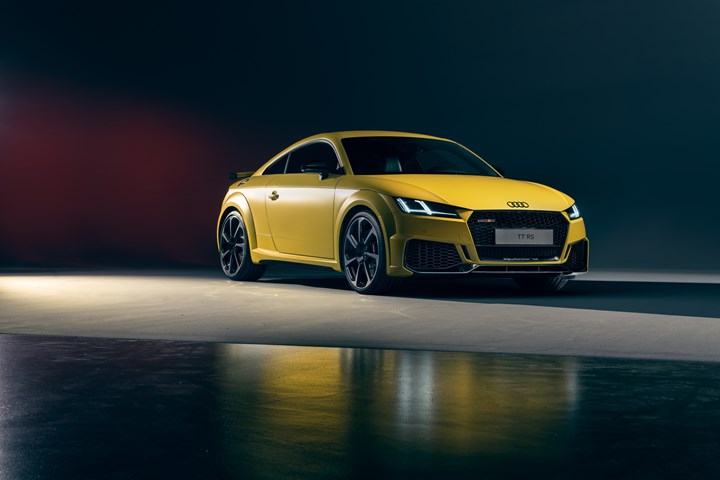Audi Goes to the Matte
Adding colors that are in demand by buyers of the brand’s sportier vehicles.

The Audi TT RS in Python Yellow matte finish. Photo Credit: Audi
“Design remains the top reason for purchasing an Audi. And the color of the vehicle is extremely important, as it’s an expression of a driver’s personality,” says Susan Nolte, responsible for exterior colors within the Product Marketing Special Equipment team at Audi.
However, even Audis purchased in Germany are generally white, black or grey/silver. Those who are really stepping out (approximately 10%) go for blue. Yet within that palette Audi offers colors like Sebring Black, which combines glass flakes with metallic effects for a rich, reflective surface.
The Audi Color & Trim team have found that there is a growing interest in a different look:
“Matte is a paint finish that is particularly popular with sporty models; RS vehicles, for example, are often ordered in eye-catching, dramatic colors,” Nolte says.
To put the RS vehicles into perspective: a 2022 Audi TT Coupe has a 2.0-liter four that produces 228 hp. A ’22 TT RS Coupe has a 2.5-liter five-cylinder engine that produces 394 hp. That’s sporty.
The models available with the matte finish—Audi TT, TTS, TT RS, Audi Q3, and RS Q3 (yes, the non-sporty variants can get it)—are painted in the 467,848-square-foot paint shop in Győr, Hungary, along with the vehicles that have a traditional clear coat.
Getting the finish
There are the phosphate layer, then cathodic dip coating, filler, base coat, and clear coat.
However, the matte version of the topcoat includes silicate particles that reflects light diffusely rather than directly. That results in the muted coloring.
Both the conventional and matte clear coats are applied in the same thickness: 0.04 to 0.05 mm.
To have a new color development accepted at Audi there is a process that can take from three to five years that has to be passed. This includes both short- and long-term testing, such as stone-chip resistance, weathering, adhesion, and corrosion resistance.
As Nolte puts it, “Top-notch quality needs time, which is why, figuratively speaking, we think about tomorrow yesterday.”
Related Content
-
Products Finishing Reveals 2024 Qualifying Top Shops
PF reveals the qualifying shops in its annual Top Shops Benchmarking Survey — a program designed to offer shops insights into their overall performance in the industry.
-
Conveyors and Paint Systems
Choosing the right conveyor system, coating technology, and ancillary equipment.
-
Cobot Enters Paint Industry With Safety at the Forefront
This collaborative robot is the first explosion-proof solution for the powder coating and paint arena that meets the U.S.’ stringent safety requirements. Its lead-through teach programming and tablet control are especially appealing to small shops with little proficiency in robotics.

.jpg;width=70;height=70;mode=crop)














